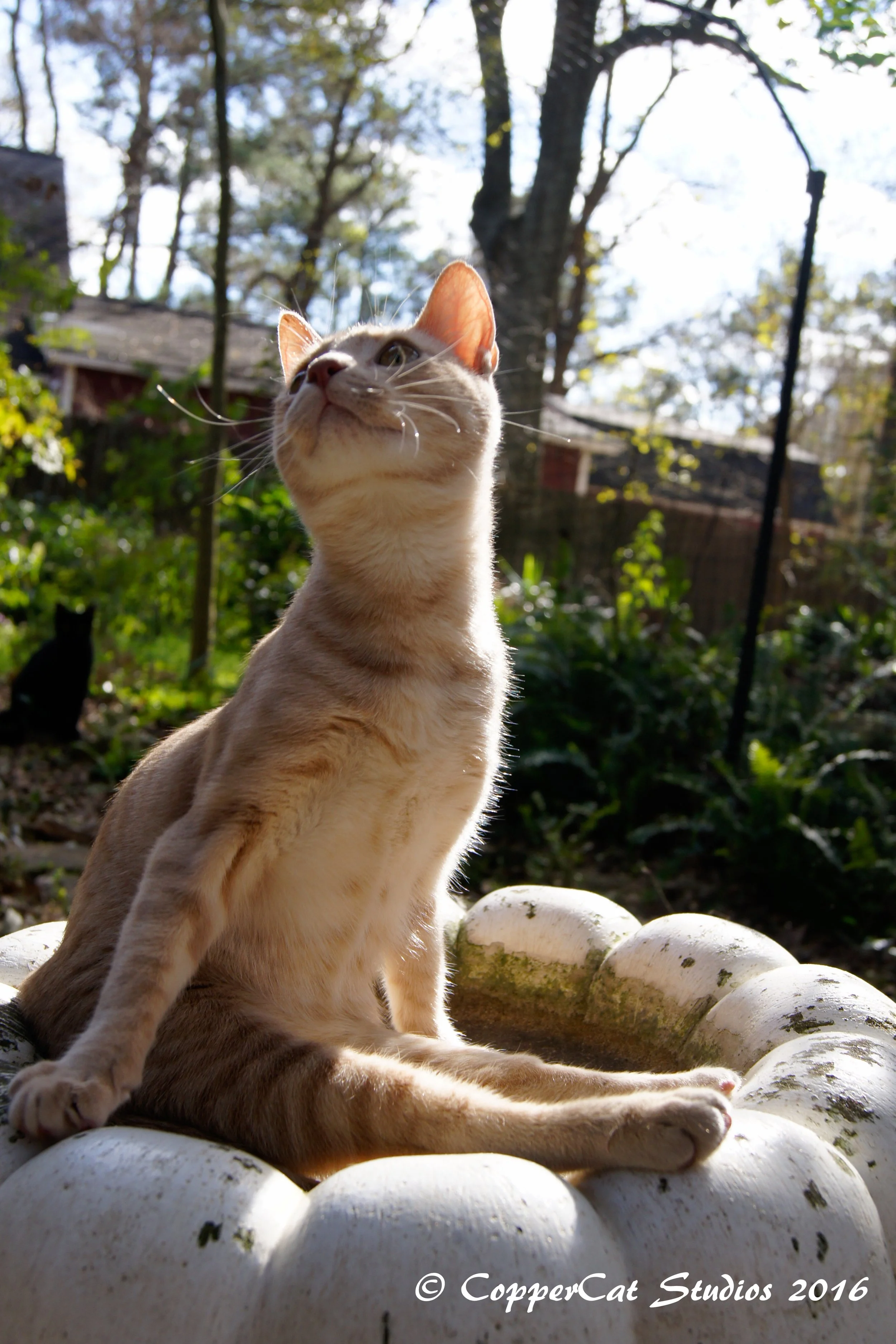Paraplegic Cats
Paraplegic cats are cats who cannot walk with their hind legs. It is a simple enough statement, but it has so much more involvement than that.
Cat paraplegia is usually caused by damage to the spinal nerve. This can happen due to trauma or they can be born that way. Many times if they are born that way, there are other internal issues that will cause an early death. Some make it to adulthood, however, but usually need specialized care for the rest of their lives.
One of the biggest traits we usually see alongside paraplegia is that they cannot eliminate waste on their own. This will present either as an inability to eliminate waste at all without help, or they leak constantly due to an inability to control their bladder or bowels. Both of these issues usually require the same treatment - the expression of the bladder and, where necessary, the bowels.
Tonks hanging out in the enclosure
It seems obvious why we would have to express the bladder of the ones who cannot urinate at all, but why the ones who leak? Well, usually the leakage is due to the bladder being too full and overflowing. This is often misdiagnosed in veterinary offices as the cat urinating on it’s own, causing these cats to be sent home with well-meaning owners. These cats will often return to the vet’s office over and over with serious bladder infections due to the bladder never clearing all of the urine - and that is if they are not returned to the vet’s office to be euthanized for leaking all over the house.
Bladder expression is a difficult process to learn, but once trained, a person can have it finished on a single cat in 2-5 minutes. It is uncomfortable for the cat, obviously, but that small amount of discomfort twice a day is certainly worth living a full and happy life. At the Commune, we use pain medication to help our paraplegics with any discomfort from the bladder expression.
In addition to the bladder expression, some paraplegics will experience drag sores on their back legs. At the time of this writing, we have 8 paraplegics and only 1 experiences this problem. This is aided by wearing what is called a “drag bag.” This is a bag made of a material similar to cloth diaper covers. It is slid up over the legs, tightened around the middle and attached to a kitty harness. It protects the rear legs from getting scuffed up.
Hiccup in his drag bag
We often get asked about wheelchairs for our cats. I (Mimi) personally believe that wheelchairs confine a cat’s natural movement too much. They make a cat move mostly in a straight line with somewhat awkward turns. While I know they work great for some cats, it is just not an option I choose to pursue. We prefer to let them scoot around naturally with the freedom to race around corners at top speed and climb cat trees at will.
It is well documented that cats experience far more pain than they would let us believe. Many people with nerve damage or missing or paralyzed limbs have reported painful sensations far after their recovery period is complete. Those two statements lead up to the likelihood that paraplegic cats experience nerve pain and/or pain in the legs. We have actually seen the nerve pain in action in the form of feline hyperesthesia on more than one of our paralyzed cats. This is another reason for us to keep these cats on the pain medicine mentioned above.
We have had many cats recover from what we initially believed to be paraplegia. They came in with severe spinal or rear leg injuries, but the issue would be spinal inflammation causing the issue, as opposed to an actual pinched nerve or displaced vertebrae. These cats slowly recovered their ability to walk and went on to become adopted and live their best lives in private homes.
If you wish to read some stories about paralyzed cats, check out Aries, Jason, Athena, Hiccup, Tonks, Chanel, Cinco, and Oriana
Aries sitting in the sun



